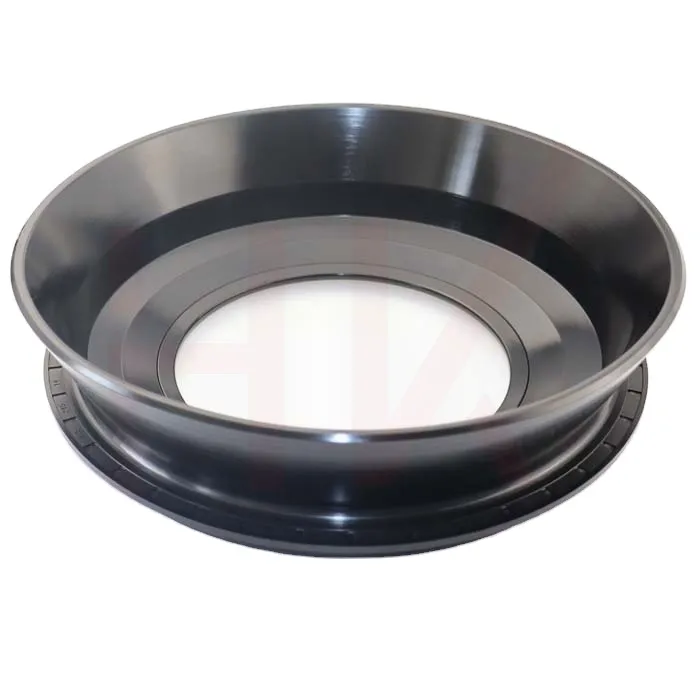12 月 . 03, 2024 18:49 Back to list
hydraulic wiper seal
Understanding Hydraulic Wiper Seals Function, Design, and Applications
Hydraulic systems play a crucial role in modern machinery, from construction equipment to industrial machines. Among the many components that ensure the efficiency and reliability of hydraulic systems, hydraulic wiper seals stand out as vital elements that protect and enhance system performance. In this article, we will explore the function, design, and applications of hydraulic wiper seals, shedding light on their importance in maintaining optimal system integrity.
What is a Hydraulic Wiper Seal?
A hydraulic wiper seal, also known as a dirt scraper or external seal, is designed to keep contaminants from entering the hydraulic system—specifically, the hydraulic cylinder. These seals are typically positioned at the outer side of the cylinder rod, where the rod exits the cylinder housing. Their primary function is to wipe away dirt, dust, and moisture from the rod, preventing these contaminants from being pushed into the hydraulic mechanism as the rod moves in and out.
Function of Hydraulic Wiper Seals
Hydraulic wiper seals serve several crucial functions
1. Contaminant Protection The most significant role of wiper seals is to protect the hydraulic cylinder from damaging external contaminants. Without proper sealing, dirt and debris can enter the system, leading to wear, corrosion, and ultimately, failure of hydraulic components.
2. Maintaining Lubrication By preventing contaminants from entering, wiper seals help maintain the required lubrication within the hydraulic system. This lubrication is essential for smooth operation and longevity of the hydraulic components.
3. Reducing Leakage While wiper seals are primarily designed to keep contaminants out, they also contribute to minimizing hydraulic fluid leakage, thereby maintaining system pressure and efficiency.
4. Enhancing Performance By ensuring that the hydraulic system remains clean and free of debris, wiper seals enhance overall system performance, allowing for smoother and more reliable operation of machinery.
Design Considerations
The design of hydraulic wiper seals is crucial for their effectiveness. Several factors are taken into account during the design process
hydraulic wiper seal

1. Material Selection Wiper seals are manufactured from various elastomers and polyurethanes, chosen for their durability and compatibility with hydraulic fluids. Common materials include Nitrile, Viton, and polyurethane. These materials must withstand harsh conditions, including temperature extremes and exposure to aggressive chemicals.
2. Seal Configuration The shape and geometry of the wiper seal are designed to optimize its contact with the rod while minimizing friction. This design ensures that the seal effectively wipes away contaminants without excessive wear.
3. Compatibility Wiper seals must be compatible with the hydraulic system's operational parameters, including pressure and temperature ranges. Designers must ensure that the seals perform well under the specific environmental conditions of the application.
4. Installation and Maintenance Proper installation is crucial to the effective functioning of wiper seals. Regular inspection and maintenance are also essential, as worn or damaged seals can lead to contamination and system failures.
Applications of Hydraulic Wiper Seals
Hydraulic wiper seals are used in a variety of applications across multiple industries. Common applications include
- Construction and Earthmoving Equipment Excavators, bulldozers, and backhoes rely heavily on hydraulic systems where wiper seals are integral to protect hydraulic cylinders from dust and debris on construction sites.
- Agricultural Machinery Tractors and various farming equipment are equipped with hydraulic systems that benefit from wiper seals, ensuring reliable performance in challenging outdoor conditions.
- Industrial Machinery Many industrial systems, including presses and automated production equipment, utilize hydraulic power and wiper seals to maintain cleanliness and efficiency.
- Automotive Applications Hydraulic wiper seals can also be found in vehicles, particularly in systems like hydraulic braking and steering.
In conclusion, hydraulic wiper seals are indispensable components that protect hydraulic systems from contaminants and enhance their performance. By understanding their function, design, and applications, we can appreciate their critical role in various industries, ensuring machinery operates efficiently and reliably in diverse environments.
-
The Power of Advanced Sealing: High-Pressure Solutions for Modern Machinery
NewsOct.29,2024
-
Optimizing Machinery with High-Performance Oil Seals
NewsOct.29,2024
-
Maximizing Machinery Efficiency with Advanced Oil Seals
NewsOct.29,2024
-
Ensuring Equipment Longevity with Quality Oil Seals
NewsOct.29,2024
-
Enhance Equipment Performance with Quality Oil Seals
NewsOct.29,2024
-
Custom Oil Seals for Specialized Machinery Needs
NewsOct.29,2024
-
The Role of Wiper Seals in Dust Sealing and Oil Protection
NewsOct.20,2024
Products categories
















